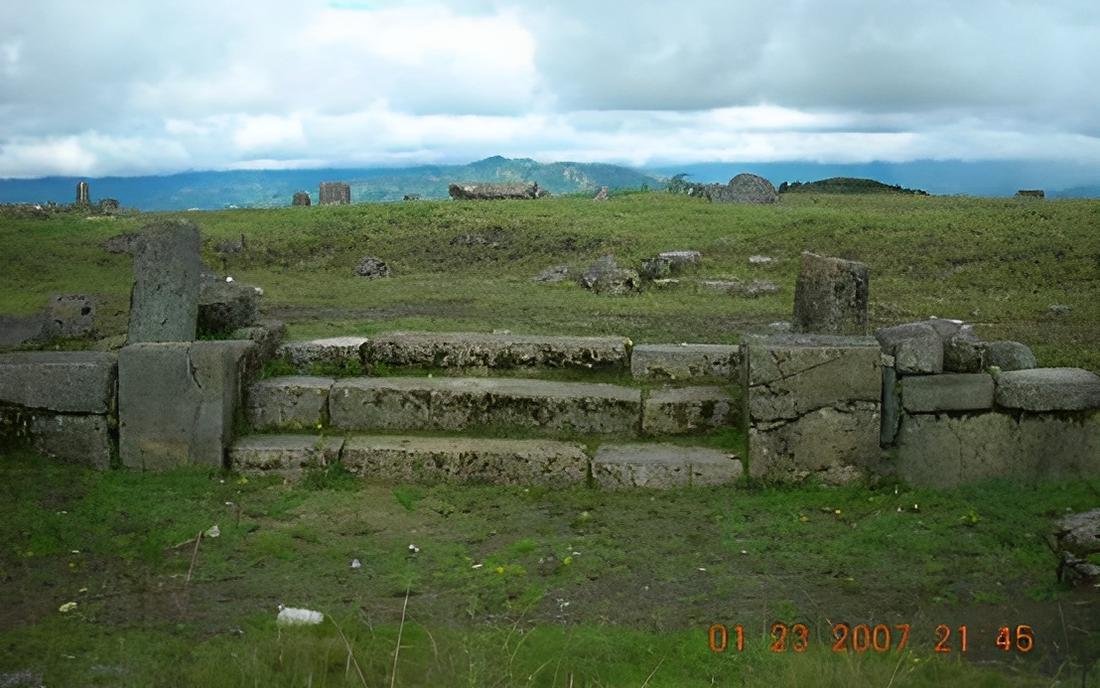According to ᴀssociated Press reporting, a significant archaeological discovery has emerged from the Pacopampa archaeological site in northern Peru, where a group of Japanese and Peruvian archaeologists have unveiled the tomb of a 3,000-year-old priest.
 Credit: Peruvian Ministry of Culture
Credit: Peruvian Ministry of Culture
The Pacopampa archaeological site, located in the Cajamarca region, approximately 900 kilometers (560 miles) north of Lima, has yielded a wealth of historical treasures. Archaeologist Juan Pablo Villanueva, speaking about this latest discovery, stated, “We have recently discovered the tomb of a 3,000-year-old figure at the Pacopampa archaeological site.” The body, belonging to what is believed to be one of the first priests in the Andes, was found in a well-preserved funerary context.
The tomb’s circular design measures three meters in diameter and one meter deep (10 feet by 3.3 feet). Inside, the priest’s body was oriented from south to north, with his lower extremities partially flexed. What makes this discovery particularly significant is the presence of a series of offerings alongside the priest, emphasizing his religious importance.
Among the offerings found in the tomb were small spherical ceramic bowls, a carved bone spatula, and two seals adorned with intricate designs. One seal featured an anthropomorphic face, while the other depicted a jaguar. These artifacts, along with the body, were covered by a protective layer consisting of at least six layers of ash and earth.
 San Pedro, Pacopampa archaeological site. Credit: Josef73 / Wikimedia Commons
San Pedro, Pacopampa archaeological site. Credit: Josef73 / Wikimedia Commons
Japanese archaeologist Yuji Seki, who has dedicated 18 years to working at the Pacopampa site, emphasized the importance of this find. “The find is extremely important because he is one of the first priests to begin to control the temples in the country’s northern Andes,” Seki stated. This discovery highlights the presence of powerful leaders in the Andes during an ancient era.
Researchers estimate that the priest lived around 1,000 BCE, further emphasizing the antiquity of this remarkable find. It offers crucial evidence of the early emergence of influential religious figures and leaders in the Andean region during this period.
This isn’t the first discovery made at the Pacopampa site by the team of archaeologists. In September 2022, they unveiled the tomb of the “Priest of the Pututos,” another ancient priestly figure. Alongside this priest were musical instruments crafted from seashells, showcasing the rich cultural and artistic practices of ancient Peru. Pututos, conch-like shells used to produce trumpet-like sounds, were found in the tomb, providing a fascinating glimpse into the musical traditions of the time.
The Pacopampa site, situated at an alтιтude of 2,500 meters (8,200 feet) above sea level, boasts nine monumental ceremonial buildings constructed from carved and polished stone. These structures were likely used for rituals and ceremonies.
This recent discovery adds to a growing list of significant findings at Pacopampa, including the “Lady of Pacopampa,” uncovered in 2009, and the burial sites of two “Jaguar Serpent priests” found in 2015. These burials are estimated to date from around 700 to 600 years BCE.
Archaeologists from the National Museum of Ethnology in Japan and Peru’s National University of San Marcos have been integral to these excavations, collaborating to unearth and study the rich archaeological heritage of the Pacopampa site.





